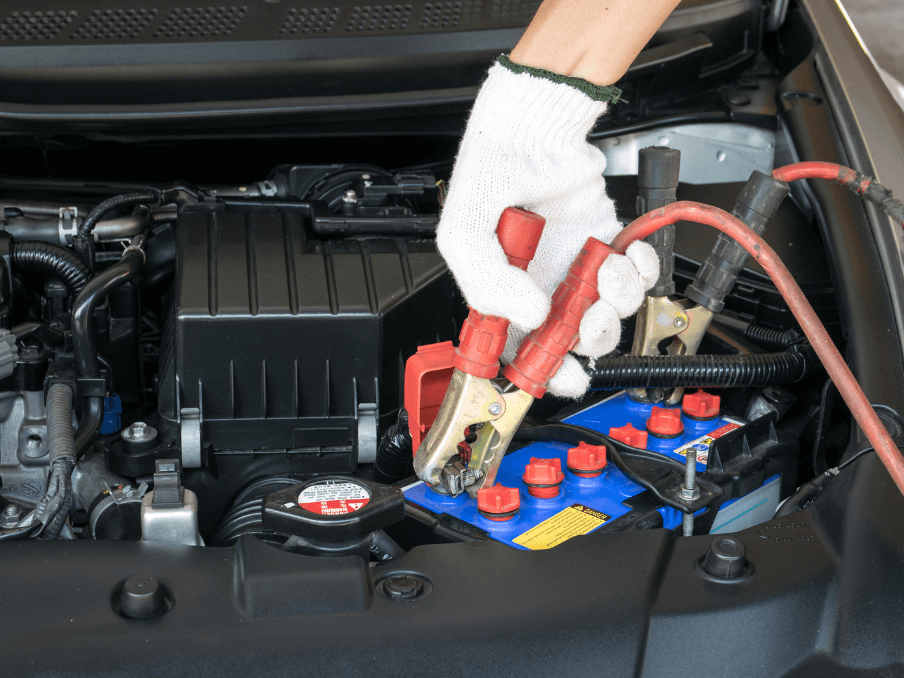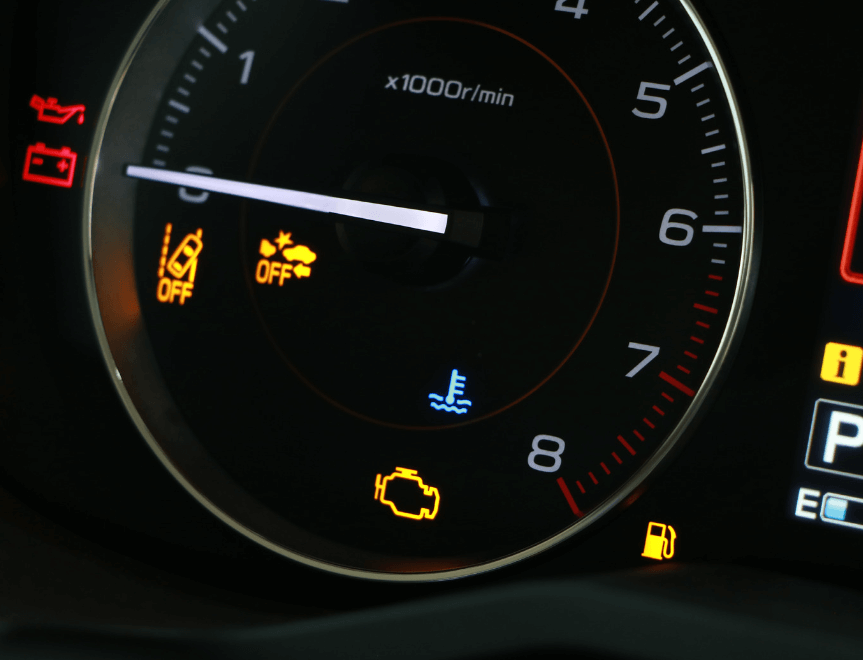
As you are a new driver, learning about your vehicle’s systems As overwhelming as it can feel, the battery charging system is no exception. One of the most common problems drivers encounter is the service battery charging system warning.
But it’s important to understand what it means and why. So in this post, we’ll cover the important aspects of a battery charging system, and offer essential maintenance tips on common problems and how you can solve them. Read our post to know what to do if this alert appears on your dashboard.
What is a Battery Charging System?
A battery charging system is an important part of any vehicle’s electrical setup, created to keep the battery charged while providing power to essential systems and accessories. This system ensures that the battery is recharged as your vehicle moves, enabling it to store enough energy to start the engine, operate the electronics and maintain electrical current. When working properly, the battery charging system provides a continuous power supply, balancing energy demand without draining the battery.
Some components of the battery charging system
Battery: Stores the electrical energy needed to start the vehicle and run accessories when the engine is off.
Alternator: Converts mechanical energy from the engine into electrical energy, recharging the battery while the engine is running.
Voltage Regulator: By regulating the voltage output from the alternator, the battery receives a steady charge and prevents overcharging.
Serpentine Belt: Drives the alternator. If this belt breaks or slips, the alternator will not charge the battery.
Wiring and Connectors: Provide paths for electricity between components. Loose or corroded connections can disrupt the system.
Each of these elements is essential. A fault in any part can trigger the Service Battery Charging System warning.

Why is the service battery charging system warning displayed?
The Service Battery Charging System warning usually appears on your dashboard when there is a problem preventing the battery from charging properly This warning indicates that something in the vehicle’s charging system – such as the alternator, battery or voltage regulator – is not working as it should. When this happens, the vehicle’s electrical components may begin drawing power only from the battery, causing it to drain and possibly leaving you stranded.
There are some common reasons why this warning light may appear:
Faulty options
The alternator is the component responsible for recharging the battery while the engine is running. If the alternator is faulty or fails, it will not produce the required power, meaning the battery will not recharge effectively.
Symptoms of a Failed Alternator Symptoms of a bad alternator include dimming headlights, flickering dashboard lights, a whining or grinding noise, and the car not starting after driving for a while.
Weak or dead battery
A worn or dead battery may not hold the charge as it should. Batteries naturally degrade over time (usually lasting between 3 and 5 years) and eventually lose their ability to fully recharge.
Signs of a Weak Battery If your battery is nearing a dead battery, you may notice difficulty starting the vehicle, interior lights, and the battery light or “Service Battery Charging System” warning light coming on more frequently.
Bad voltage regulator
The voltage regulator controls the amount of voltage sent from the alternator to the battery. This ensures that the battery receives a consistent voltage to avoid overcharging or undercharging. If the voltage regulator fails, it can cause voltage levels to fluctuate, causing charging problems.
Symptoms of a bad voltage regulator include dim or excessively bright headlights, flickering dashboard lights, and power surges in the electrical system. In some cases, the battery may overheat due to receiving too much power.
Worn or loose serpentine belt
The serpentine belt drives the alternator among other components. If this belt wears out, slips or breaks, it will not turn the alternator properly, resulting in a lack of power output and, as a result, a discharged battery.
Signs of a serpentine belt problem Look for visible cracks, fraying, or glazing on the belt. Other symptoms include noises from under the hood, an overheating engine, and power steering failure.
Corroded or loose wiring and connectors
Wiring and connectors between the battery, alternator and other parts of the charging system are essential for consistent power flow. Corroded or loose connections can interrupt the electrical circuit, leading to inconsistent charging or complete failure of the charging system.
Symptoms of a wiring problem include intermittent power problems, flashing lights, difficulty starting the vehicle, and visible corrosion at the battery terminals or other connections.
Overload electrical system
Running multiple power-draining accessories (such as high-beam headlights, heated seats, or aftermarket electronics) can stress the charging system, especially if the alternator or battery is weak.
Symptoms of an Overloaded System If all of your vehicle’s electrical components are struggling to get power, you may experience dimmed lights, slow window operation, and other electrical system problems.

What do you do when the Battery System System Warning Light illuminates?
1. Turn off unnecessary electrical accessories
To conserve energy, immediately turn off all unnecessary electrical components, such as:
Radio and Audio Systems
Air conditioner or heater
Heated seats and mirrors
Any other aftermarket accessories (such as phone chargers or GPS units)
This will reduce the load on the battery and help prolong its remaining charge.
2. Pull over safely and turn off the engine
If you are driving with the warning light on, pull over to a safe place as soon as possible. By turning off the engine, you prevent further battery drain. Restart the vehicle after a few minutes to see if the warning light comes on. Sometimes, a temporary error may trigger the light and a restart may resolve it.
3. Inspect the battery and connections
Once that’s secure, check under the hood to inspect the battery and its connections Here’s what to look for:
Loose terminals Make sure the battery terminals are tight and secure. Loose connections can prevent proper charging.
Check for signs of corrosion (white or green deposits) around the battery terminals. Corrosion can interrupt the flow of electricity, and cleaning with a wire brush or baking soda solution can temporarily solve the problem.
Look for cracks, blisters or leaks in the battery case. If you see any, it’s probably time to replace the battery.
If you’re unsure or don’t feel comfortable inspecting the battery, go to the next step and seek professional help.
4. Inspect the Serpentine Belt
The serpentine belt drives the alternator, which is responsible for recharging the battery. A broken, slipping or worn belt will prevent the alternator from producing power. If you can locate the serpentine belt under the hood, look for signs such as:
Visible cracks or fraying
Shiny, shiny spots that indicate wear
Looseness or misalignment
A worn or broken serpentine belt needs to be replaced by a mechanic. If the belt is intact and appears to be in good condition, the problem is related to another component in the charging system.
5. Check for abnormal noise from the alternator
If the alternator fails, you may hear unusual noises from under the hood, such as whining or grinding. These sounds may indicate problems with the alternator bearings or other internal components. If you hear any of these sounds, it’s best to have the alternator inspected by a professional as soon as possible.
6. Drive the car to the nearest repair shop (if safe).
If the warning light persists after restarting the engine, a trip to a repair shop is essential for further diagnostics. However, avoid driving long distances, as the car can only run on battery power, which will eventually drain.
Limit electrical usage and keep electrical usage to a minimum to conserve battery power.
Drive directly to the repair shop and avoid stopping or running errands on the way.
7. Get a diagnostic test at a repair shop
They will check the voltage and capacity of the battery to see if it is holding a charge.
They will check the voltage output of the alternator to make sure the battery is charging properly. A faulty option may require repair or replacement.
In many vehicles, the voltage regulator is built into the alternator. They will inspect this component to ensure it maintains consistent voltage.
Also check for loose or corroded wires between the battery, alternator and voltage regulator.
A diagnostic test can reveal which component is illuminating the warning light, allowing for a proper fix.
8 You don’t ignore warning lights
Ignoring the battery charging system warning light can lead to more significant problems, including a discharged battery that will prevent the vehicle from starting. Additionally, failure of the charging system can damage other electrical components, leading to more expensive repairs.
9. Maintain regular charging system
Check the battery regularly, especially if it is more than three years old. Most auto parts stores offer free battery testing.
Check your alternator periodically, especially if you notice lights or other unusual electrical behavior.
Keep terminals clean to prevent corrosion and ensure a good electrical connection.
Replace the serpentine belt as needed and the serpentine belt should be regularly inspected and replaced according to your vehicle’s maintenance schedule.
Whether you’re a new or experienced driver, following our tips can extend the life of your battery and prevent charging problems.
Frequently asked questions for new drivers
How long does a car battery last?
Most car batteries last between 3-5 years, but extreme temperatures and driving habits can affect their lifespan.
Can I drive with the Service Battery Charging System light on?
It is best to avoid driving with this warning light on, as it may indicate a serious problem that could cause your vehicle to stall.
How much will it cost to fix the charging system?
Repair costs may vary. A new alternator can cost between $200-$500, while battery replacement is usually $100-$200.
Why does my battery light go on and off?
Intermittent flashing can be caused by a loose connection or alternator failure. A diagnostic check is recommended.
How do I know if my options are bad?
Answer: Symptoms of a failing alternator include dim lights, a whirring noise, and a dead battery. If these symptoms occur, consult a mechanic.
Conclusion: Stay ahead of battery charging issues
As a new driver, understanding the basics of your vehicle’s battery charging system can save you from unexpected breakdowns and costly repairs. When you see the “Service Battery Charging System” warning, take it seriously and follow the steps to diagnose and fix the problem. With regular maintenance and awareness of potential problems, you can keep your vehicle’s battery charging system reliable and long-lasting.
Remember, being proactive with vehicle maintenance is one of the best habits you can develop as a new driver.



